Hoi An – a place where life flows quietly like that. Hoi An – a place where the unintentional flow of time seems unable to bury the ancient atmosphere. The old roofs covered in moss, the streets bathed in the red hues of lanterns, the intricately carved wooden boards—all of these transport us back to a world of several hundred years ago. This is just a simple part of the ancient town of Hoi An, yet it is enough to captivate and make one lose their way. The article “Introduction to the Ancient Town of Hoi An” helps you gain a clearer view of Hoi An.
Table of Contents
Where is Hoi An Ancient Town?

Where is Hoi An Ancient Town? Hoi An Ancient Town is an ancient town located downstream Thu Bon River, in the coastal plain of Quang Nam Province, Vietnam, about 30 km south of Da Nang City.
Which province is Hoi An ancient town? Hoi An is a city in Quang Nam province with many old town built in the 16th century and still exists almost intact so far. In the ancient documents of the West, Hoi An is called Faifo. Hoi An Ancient Town has been recognized as a UNESCO World Heritage Site since 1999. This is the place attracting many tourists from Da Nang – Hoi An.
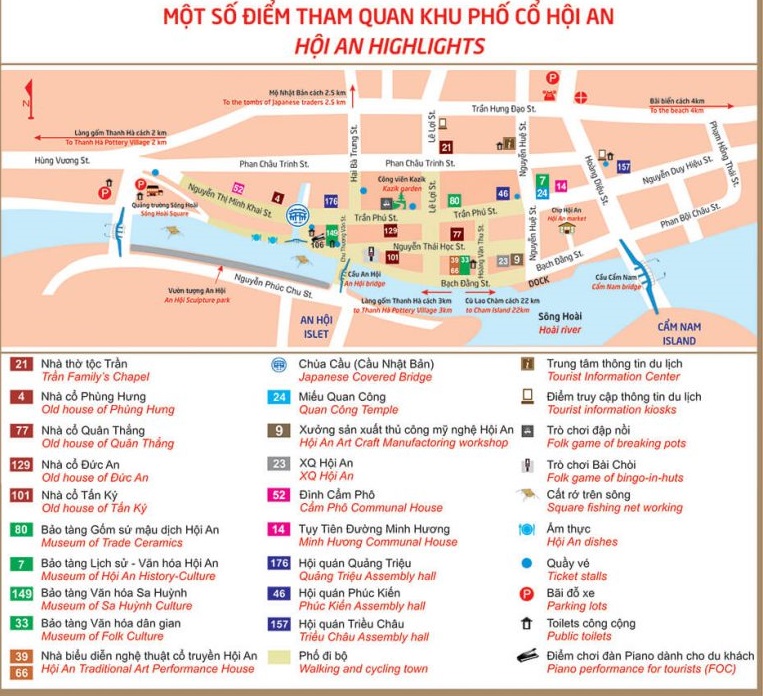
History of Hoi An Ancient Town
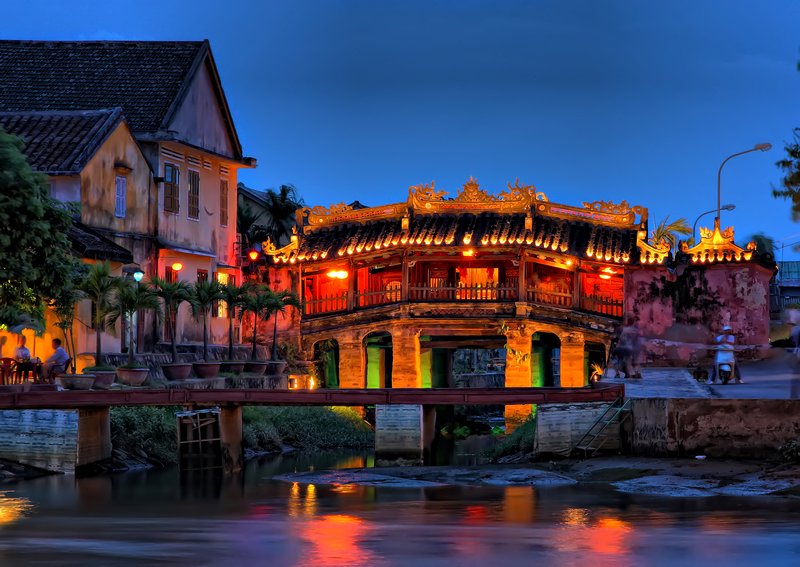
Hoi An was born around the second half of the 16th century, the period of Vietnam was under the reign of the Le Dynasty. In 1527, Mac Dang Dung won the Le house, the East Kinh region under the Mac’s control. In 1533, Nguyễn Kim took on the name of the Lê Dynasty to gather soldiers against the Macs. After Nguyen Kim died in the year, Trinh Kiem’s son-in-law took over, Nguyen Kim’s family was overwhelmed.
In 1558, Nguyen Kim’s second son Nguyen Hoang and his family and some soldiers retreated to entrenched in Thuan Hoa area and after 1570, Nguyen Hoang continued to seize Quang Nam. Together with his son Nguyen Phuc Nguyen, Nguyen Hoang built a stronghold, tried to develop Dang Trong’s economy, expanded trade with foreign countries and Hoi An became the busiest international port in the East region. South Asia at that time.
Describe Hoi An ancient town
Hoi An with traditional architecture
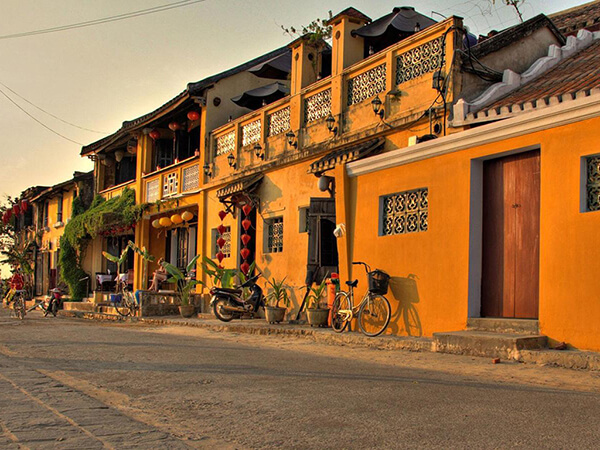
Hoi An is famous for its traditional architectural beauty, harmony of houses, walls and roads. Along with many events of ups and downs of history, Hoi An ancient town still retains the old beauty of ancient times, wearing mosses in every tile roof, bricks, trees … as the idyllic definition of personality, pure soul , the true nature of the local people.
Architecture of Hoi An Ancient Town
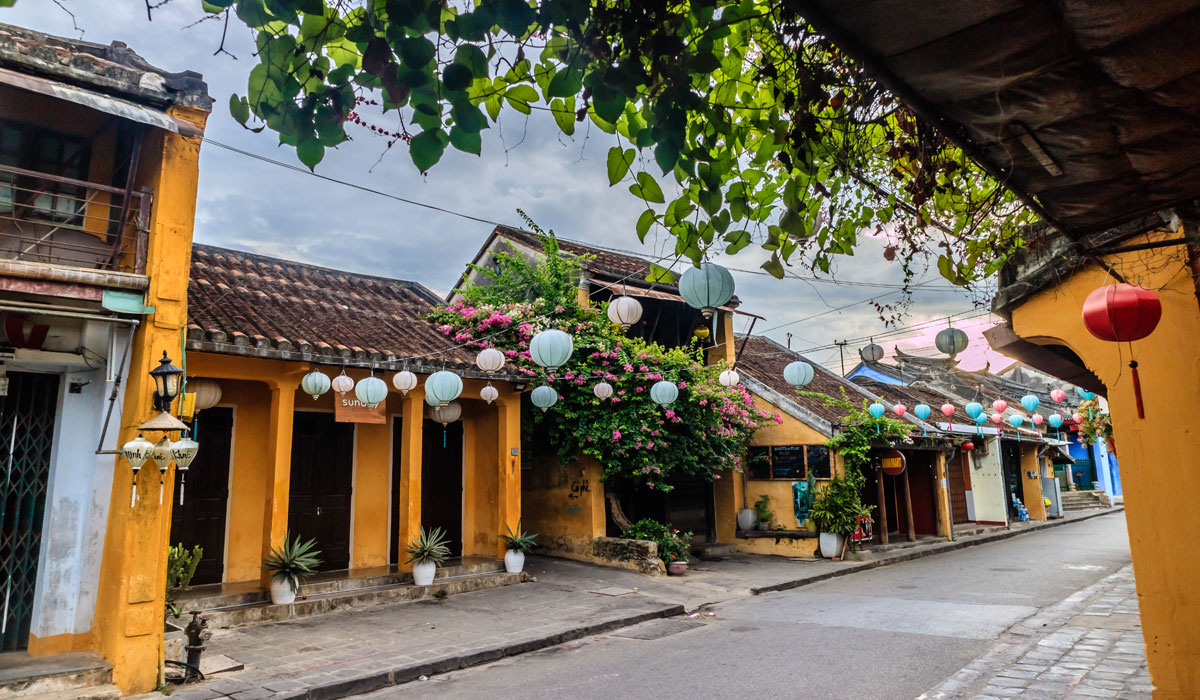
Each house in Hoi An ensures harmony between living space and nature, so in addition to arranging the house into spaces, the terrace of the house is paved and decorated with water tanks, rockery, trees. scene, creating an overall beauty. With a unique architecture, Hoi An’s house space is always airy, full of sunlight, people and nature as one. Those things bring a comfortable and comfortable life for the locals and the enjoyment for tourists in the Da Nang trip.
Tile roof
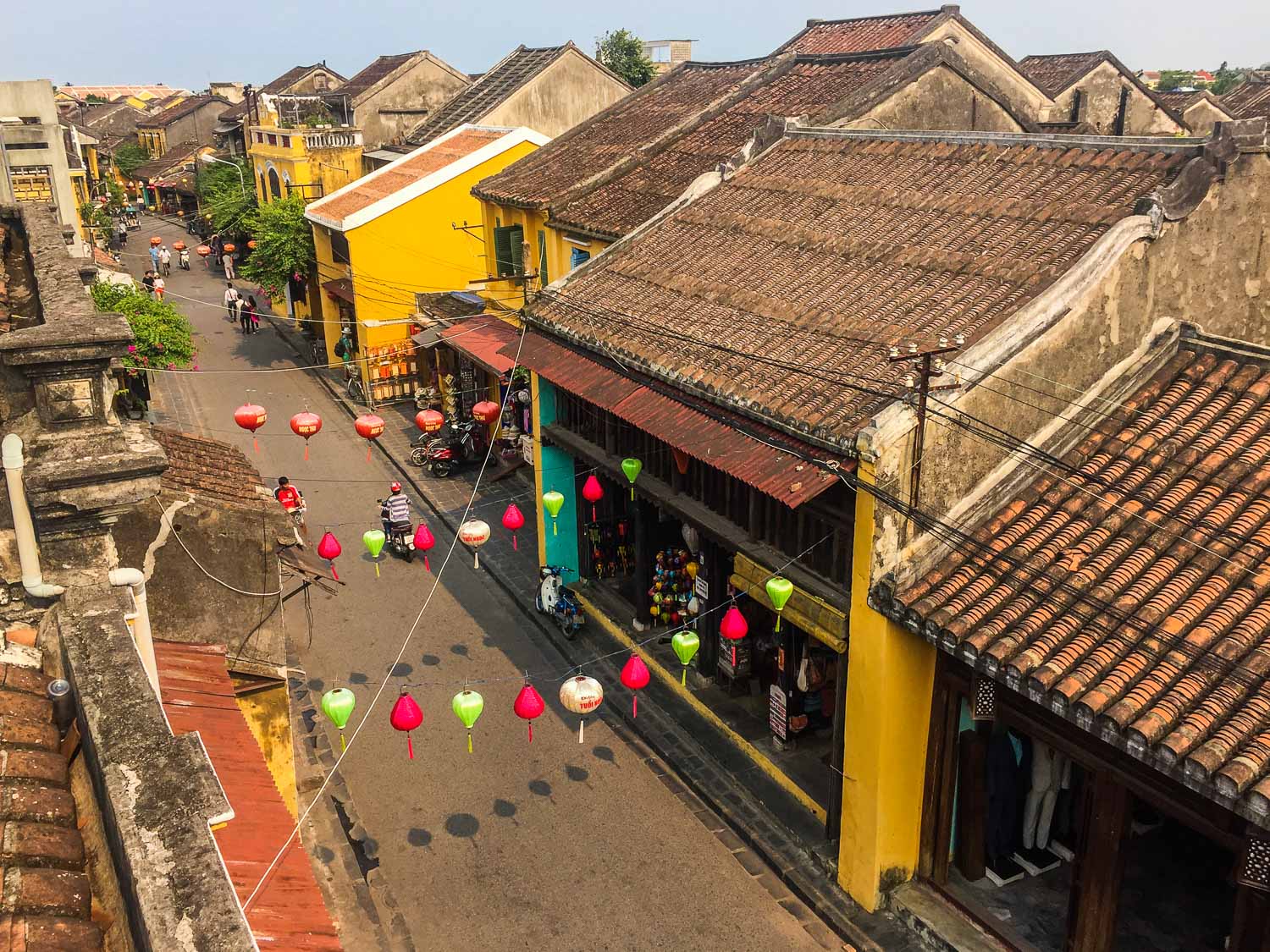
The houses in Hoi An are mostly made in the form of two roofs, most of the main houses and auxiliary houses do not share a roof but two successive folds. Very few cases of government roofs on the annex. In contrast, most toilets are roofed in four-roof style. On the general ground, the front house, the bridge and the back house are roofed with separate roofs. Tile in Hoi An is a kind of tile made from thin, earthy, rough baked, square shaped, about 22cm on each side and slightly curved shape. When roofing, people first put a row of tiles upside down and then proceeded to a row of tiles facing down.
This way of roofing is called the yin and yang roofing pattern. When the roof is finished, the tiles are fixed with mortar, forming a strip of tiles that rise up and down along the roof, making the whole roof feel a strong and strong look. On the top of the roof, the roof of the roof was built up to a rectangular shape like a box, there were also some cases where the walls of the walls were also built high, which made the whole whole seem unbalanced. The form and decoration of the wall is always a strong impression and is a very valuable element of Hoi An ancient town.
Street

Streets in the old town are arranged horizontally along the board style with short and beautiful streets, winding, hugging houses. Walking through each of those small and peaceful streets, visitors not only enjoy delicious food but also see a part of daily life of Hoi Hoi people, a peaceful and simple life. hetero
The complex of Hoi An architectural monuments is very rich and beautiful so this place has been and continues to be a place to attract domestic and foreign tourists to visit, explore and enjoy the whole vacation when booking hotel right in Hoi An old town. Take the cheap Da Nang tour program with Saigon Star Travel, visitors will realize that, it seems that time has stopped here in every roof with yin and yang tiles covering moss, old gray molded walls. , kept from ancient times and existed to this day.
Typical monuments
Bridge Pagoda

When mentioning Hoi An, visitors certainly do not want to miss the “symbol of Hoi An” – Bridge Pagoda. Bridge Pagoda, also known as Japanese Pagoda, is located at the intersection of Nguyen Thi Minh Khai Street and Tran Phu Street. This unique architectural structure is a typical landmark in Hoi An. This pagoda was built by Japanese merchants who came here for trade around the mid-16th century.
Tan Ky ancient house
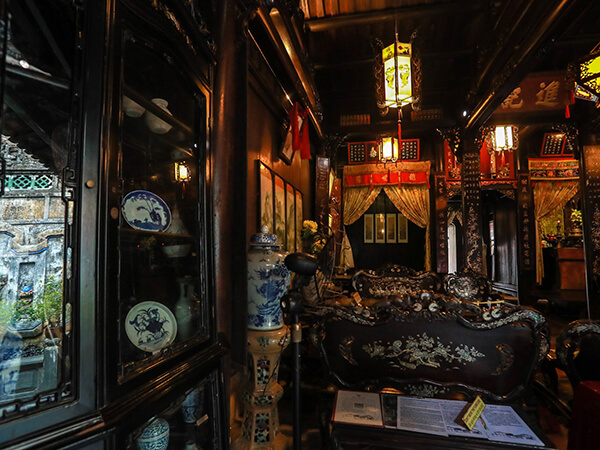
Tan Ky Ancient house is honored to be recognized as a National Heritage and is the only place that welcomes heads of state and politicians from both domestic and international locations. The ancient house combines Chinese, Japanese, and Vietnamese architectural styles. With its characteristic tubular architecture of the ancient town, this location consists of two horizontal beams stacked on top of each other, symbolizing heaven and humanity, and five vertical beams representing the five elements. The harmonious architecture of the house expresses the aspiration for harmony between humanity and nature in Hoi An.
Quan Thang old house
Also one of the most beautiful ancient houses in Hoi An today. The delicate and vivid part of architecture and sculpture here is carried out by the artists of Kim Bong carpentry village in the style of Hoa Ha and China. Over time, ancient houses still stand there as challenging time, helping today’s generation visualize the life of the merchant class in Hoi An in the past.
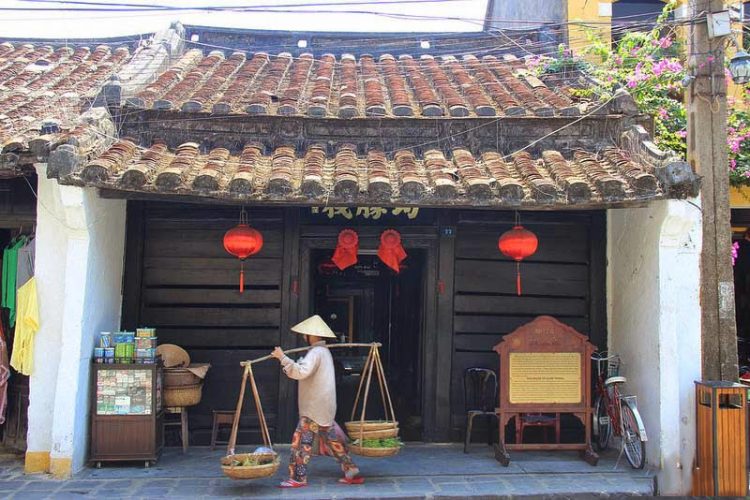
Hoi An ancient town still has its own beauty in every street corner, every roof, and on small roads. Here, visitors can feel the warmth in each dish, from the friendly, close smile of the people. Even for plants, the space here is also attractive to tourists.
Walking on each small street, you find yourself in the old days, the beautiful memories of childhood on this strange and loving land. Hopefully, introducing the Hoi An Ancient Town of Private Car Hoi An will help you have an interesting and unforgettable experience when visiting here.
If you really want to explore this place, we suggest giving you the best routes at the links below: danang airport to hoi an, hue to hoi an



